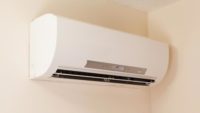Thanks to folks like you, I’ve been able to delve into many forensic examinations of mechanical mayhem and then offer solutions based on solid engineering guidelines. In many ways, my job as a mechanical contractor is far easier than your demanding careers. Case in point: The underperforming radiant heating system in a high-end residence near the Pentagon.
The lawyers had gotten my name from a mechanical engineer. The owner, 95 and wheelchair-bound, discovered her master bedroom and bathroom could not be heated above 55° F during colder weather. Naked and wet in 55° air was no way to leave a customer without correcting the problem. The mechanical contractor had been given the option to hire whomever was needed to correct the issues, and the owner stated she would pay for the additional work — whatever was needed! As I spoke with her son, I asked where do customers like his mom exist, as I have never once had a customer make me a similar offer.
Over the decades, I too have made mistakes, but it was always going to come out of my hide to correct the flubs. Fortunately, because of folks like you who provided our industry with design software (or paper exercises long before computers) that, when properly used, eliminated mistakes allowing me to avoid large financial issues — for the most part.
Warmboard had been used for the radiant heating in the master suite, and their engineers always provide the technical details regarding Btu/h outputs per square foot based upon a few basic guidelines: Average net water temperature (supply minus return, divided in half); floor surface covering R-value and where they intersect on the graph, and you can clearly define the output in Btu/h per square foot. Providing you have performed a proper heat loss/gain calculation, it’s simple math in the end. God I hated math in high school and college. I am dyslexic, so math was always a struggle. That said, math has been my true and loyal best friend in the mechanical trades. I just need to double-check everything, but dyslexic math errors are always divisible by 9. My father, the accountant, taught me that while we were auditing a bank’s books. Much to his disappointment, I suspect, none of his three sons chose to follow his footsteps into accounting.
I needed to convince a jury why the geothermal system was not able to provide the comfort required. The opposing lawyers failed to depose me in advance of my sworn testimony, but that really wouldn’t have made much of a difference because while liars figure, figures don’t lie. The contractor’s own Manual-J calculations didn’t differ too much from my own, so I suggested we use his calculations and her lawyers agreed. The plain fact of the matter was once you checked the Warmboard diagram and determined the Btuh output per square foot and then compared that to the actual Btu/h per square foot per the Manual-J calculation, there was no way the master suite could be adequately heated to a reasonable comfort level. My display, for the jury, was Warmboard’s own chart with highlighted lines to illustrate where the Btu/h per square foot fell when the lines intersected. Then it was a simple matter of showing the shortfall between Warmboard’s Btu/h and the contractor’s own Manual-J calculations.
Reasonable comfort level
Speaking of which, communication is incredibly important. No one had ever asked the wheelchair-bound owner what temperature she desired when naked and wet in her master bathroom! We cannot know if we don’t ask, right? Many customers have surprised me over the decades with their responses to comfort questions. If they want 68° on a 100° day, I need to have that information before I design their AC system. Likewise, if our wheelchair-bound lady wants 80° when it’s 0° outdoors, that is essential information needed to properly design her radiant heating system.
The resolution to her discomfort issues was remarkably simple. In her master bedroom, there was a large wall section of glass, which ordinarily would present a comfort issue as heat goes to cold — always — and a wall of glass always presents a comfort-challenge. However, because of her disabilities, there was a large window seat that presented an opportunity to provide a space for a radiant panel radiator. All that remained was choosing one that would meet (or exceed) the shortfall in required Btu/h output.
I was reminded of my trips to the ISH trade show in Frankfurt, Germany, and widespread use of flat-panel radiant radiators in our hotel rooms. Oversized deliberately, but governed by individual thermostatic radiator valves. My good friend Dan Holohan managed to get me to make a fool of myself at the Viessmann Technical College by posing a question about why TRVs (Thermostatic Radiator Valves) were required on all radiators. All flat panel radiant radiators, I should add. The tour guide looked at me like I was, quite possibly, the biggest idiot in the room! Ignorance aside, sizing a flat-panel radiant radiator is a basic matter of comparing Btu/h outputs based upon average water temperatures and gpm of circulator flow. Each manufacturer has charts to aid in this selection. Add a TRV, and you can easily add flat panel radiators into an existing underperforming hydronic radiant system. In this case, that meant interrupting the existing PEX lines to parallel circuit the flat panel radiators.
So the master bedroom was resolved, but what about the master bathroom? There was lots of open wall space available for adding radiant flat panel radiators, so the biggest issue was placement for optimum comfort since radiant heating is directional — just like sitting around a campfire.
Resolution
Many times, we have been able to resolve comfort issues by employing what some would call out-of-the-box thinking. I would tend to disagree and say we simply used good sound engineering principals based upon the work previously done by others.
Blending radiant flat-panel radiators into existing underperforming hydronic heating systems has been a staple of our resolutions for imbalance and comfort issues for decades. These have been utilized as supplemental or stand-alone comfort-heat-sources with tried and true results. From Church Narthex entry areas to converted cold sliding-glass-doors porches where discomfort previously ruled the day to absolute radiant hydronic comfort ruling the day, radiant panel radiators have saved the day on many occasions.
This home had one more area of extreme discomfort: The sunroom. Two walls of almost solid glass and no zoning in the existing HVAC system, so, naturally, the room was uncomfortably cold during the heating season. No radiant heating system could have provided full-on comfort here, but fortunately, there was a nice 8-inch base board wrapping the room. Enter high-output radiant flat-panel heat emitters, which were able to offset the exacerbated glass-panels heat losses. They easily blended in with the existing average water temperature to eliminate this last hydronic heating comfort issue.
supergenijalac/iStock/Getty Images Plus via Getty Images.




